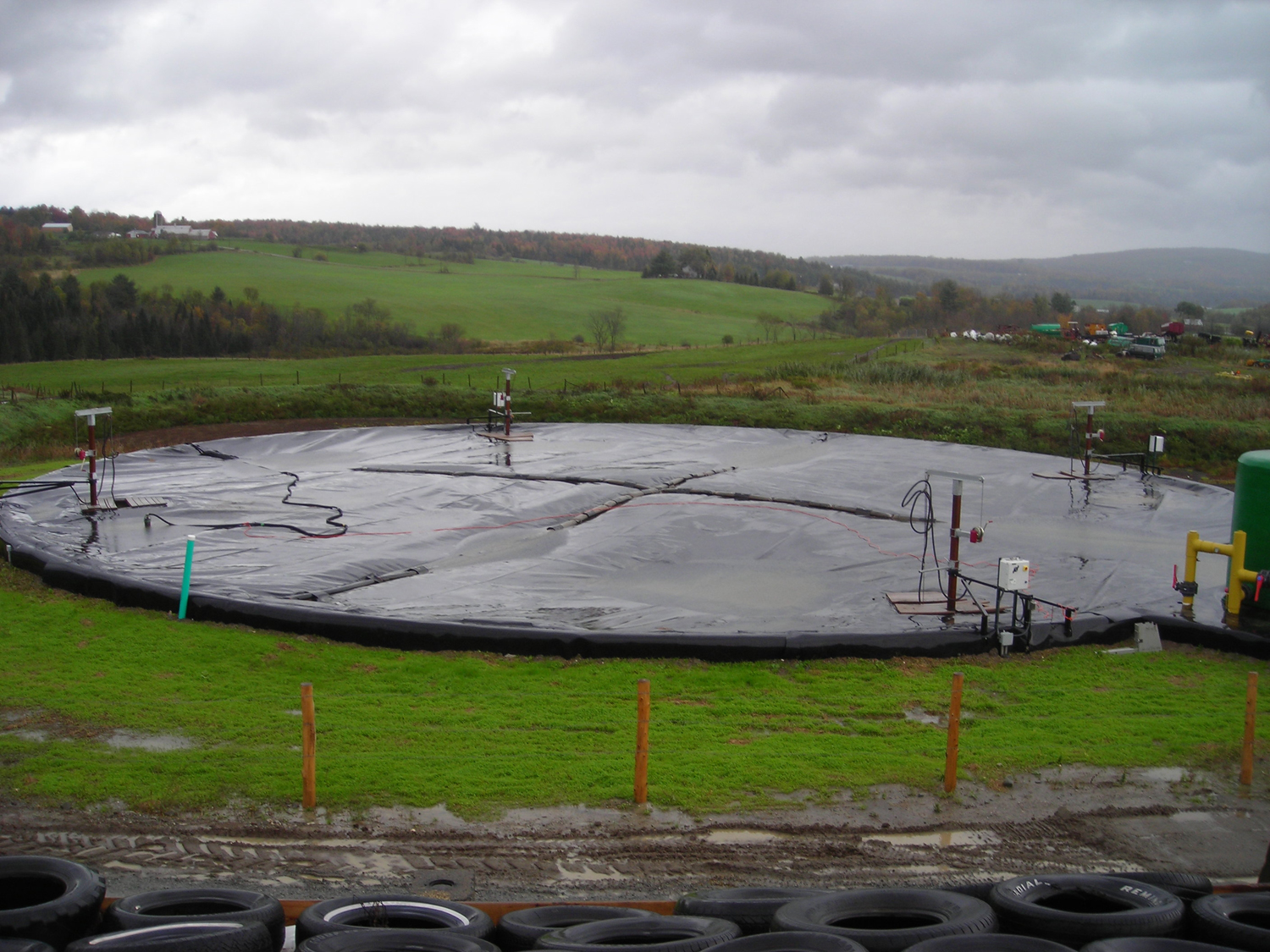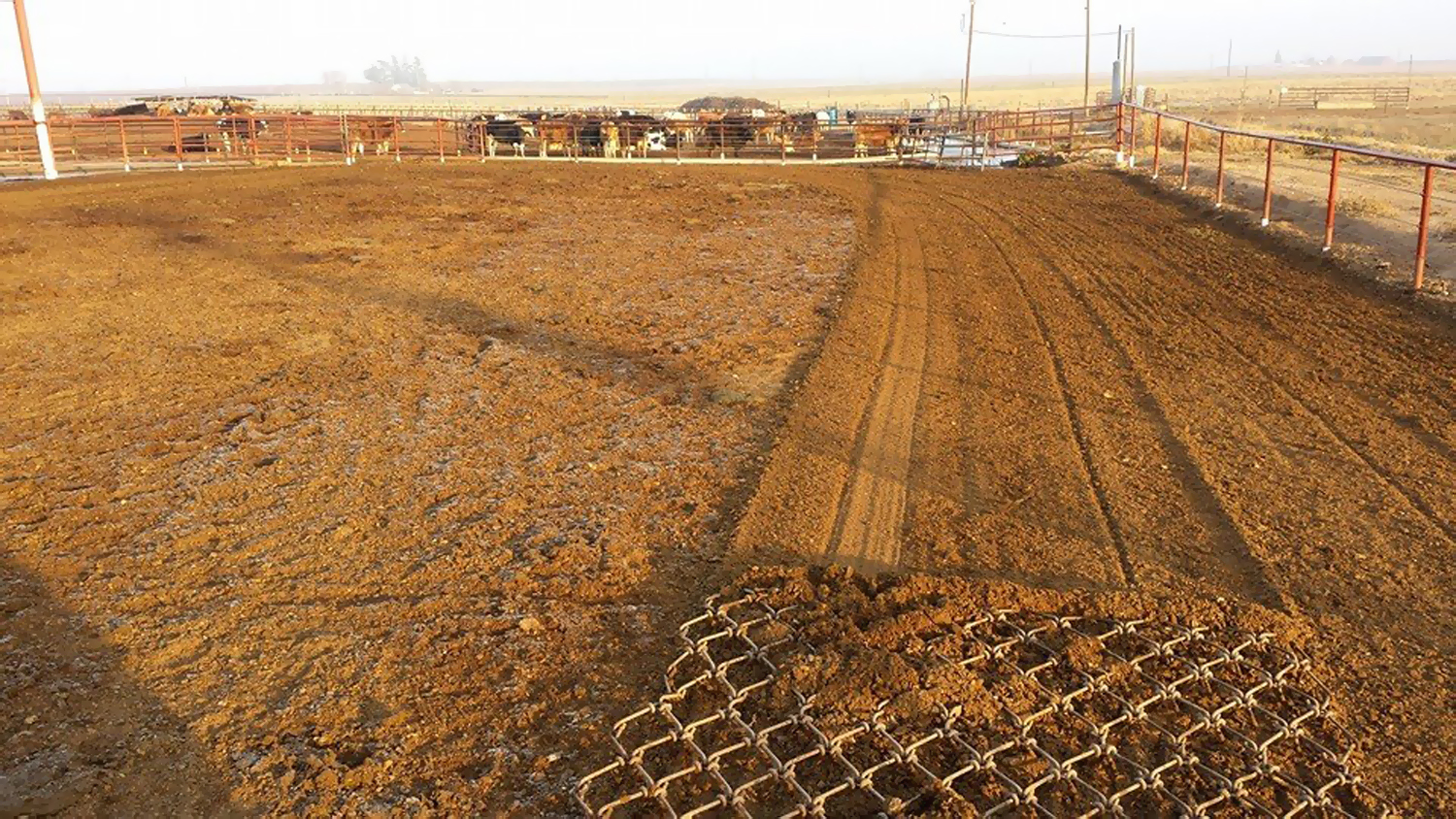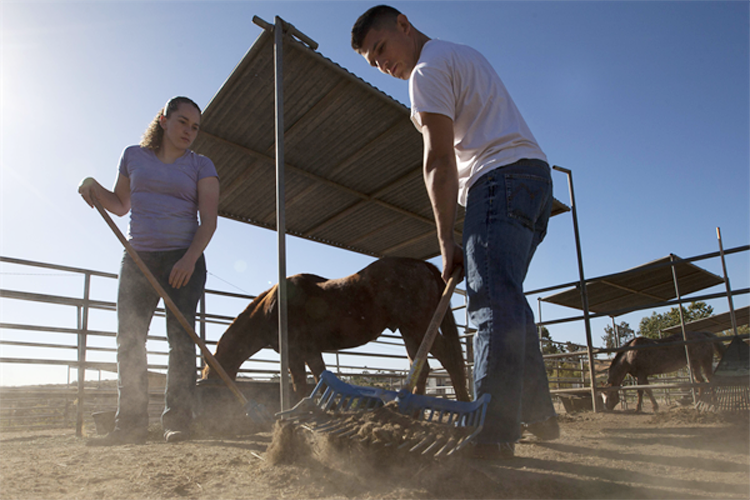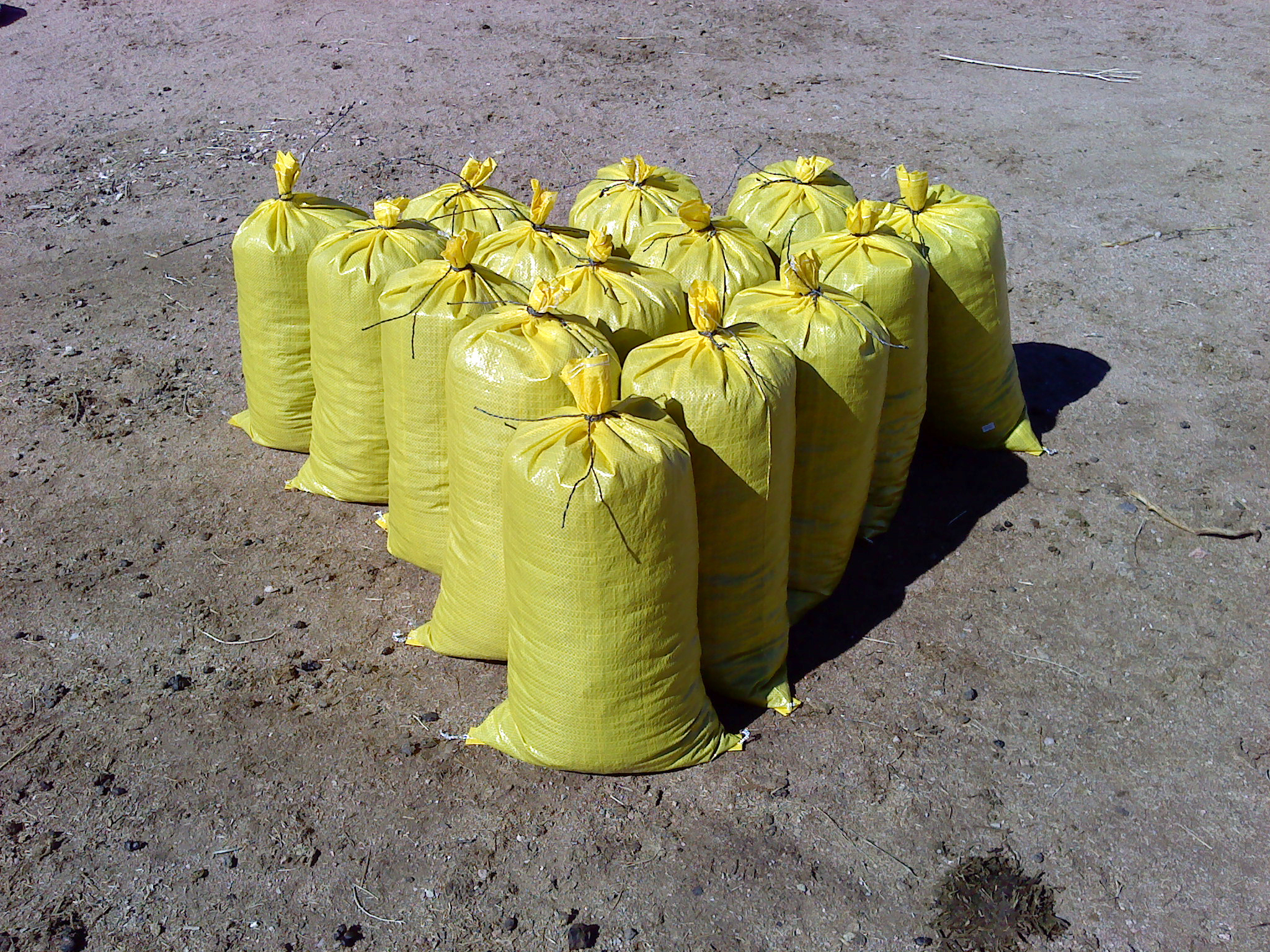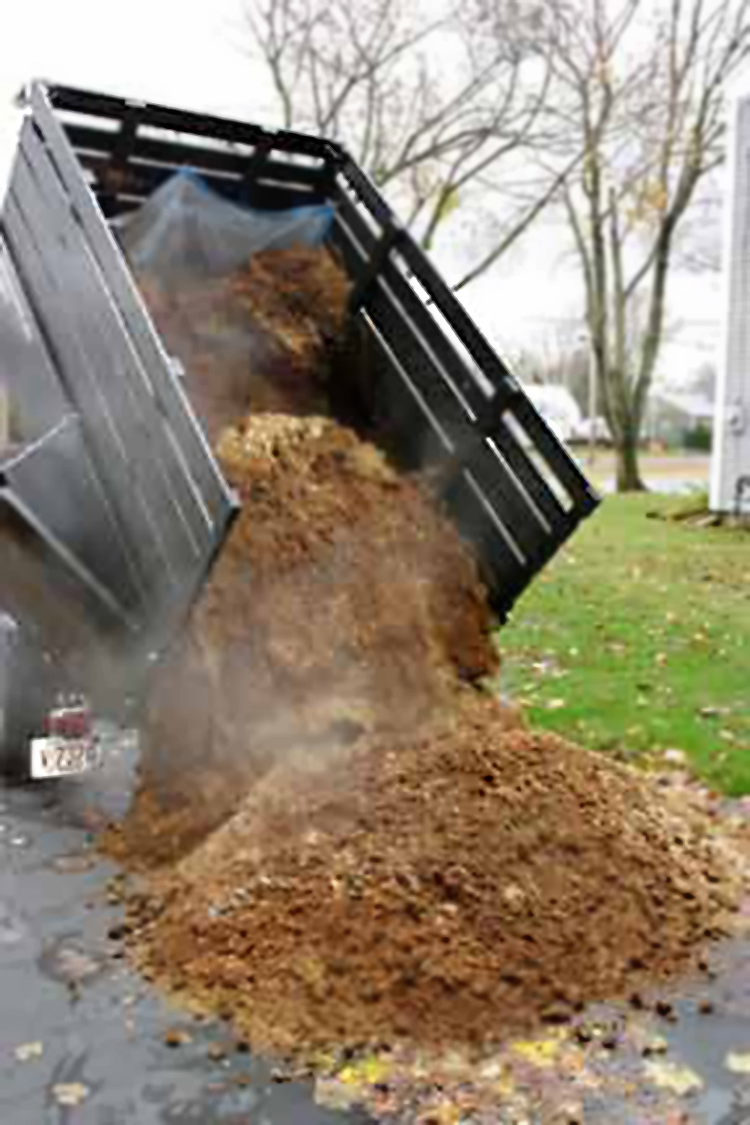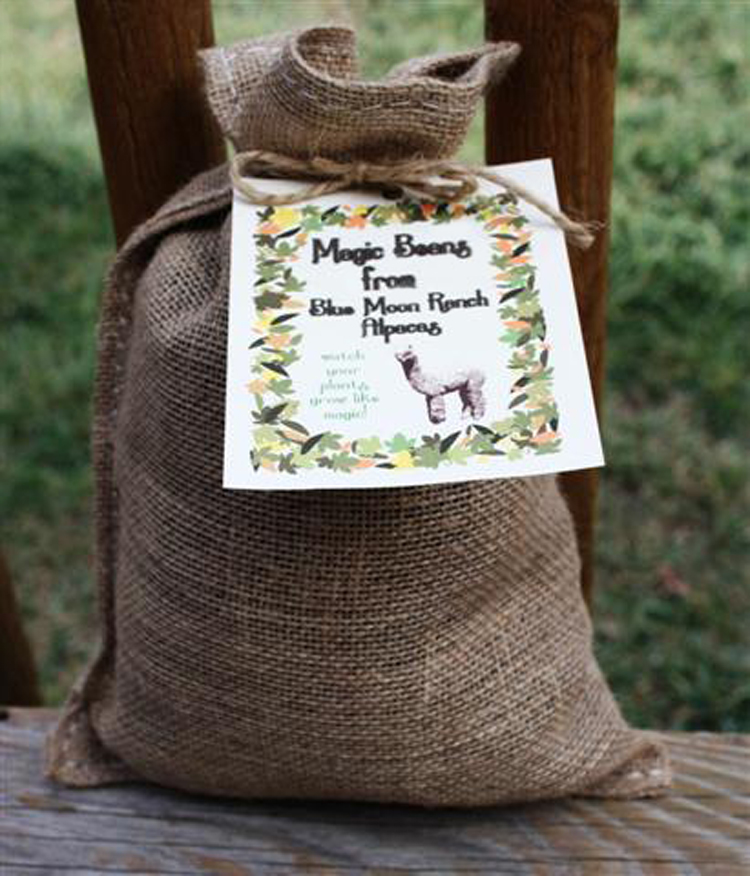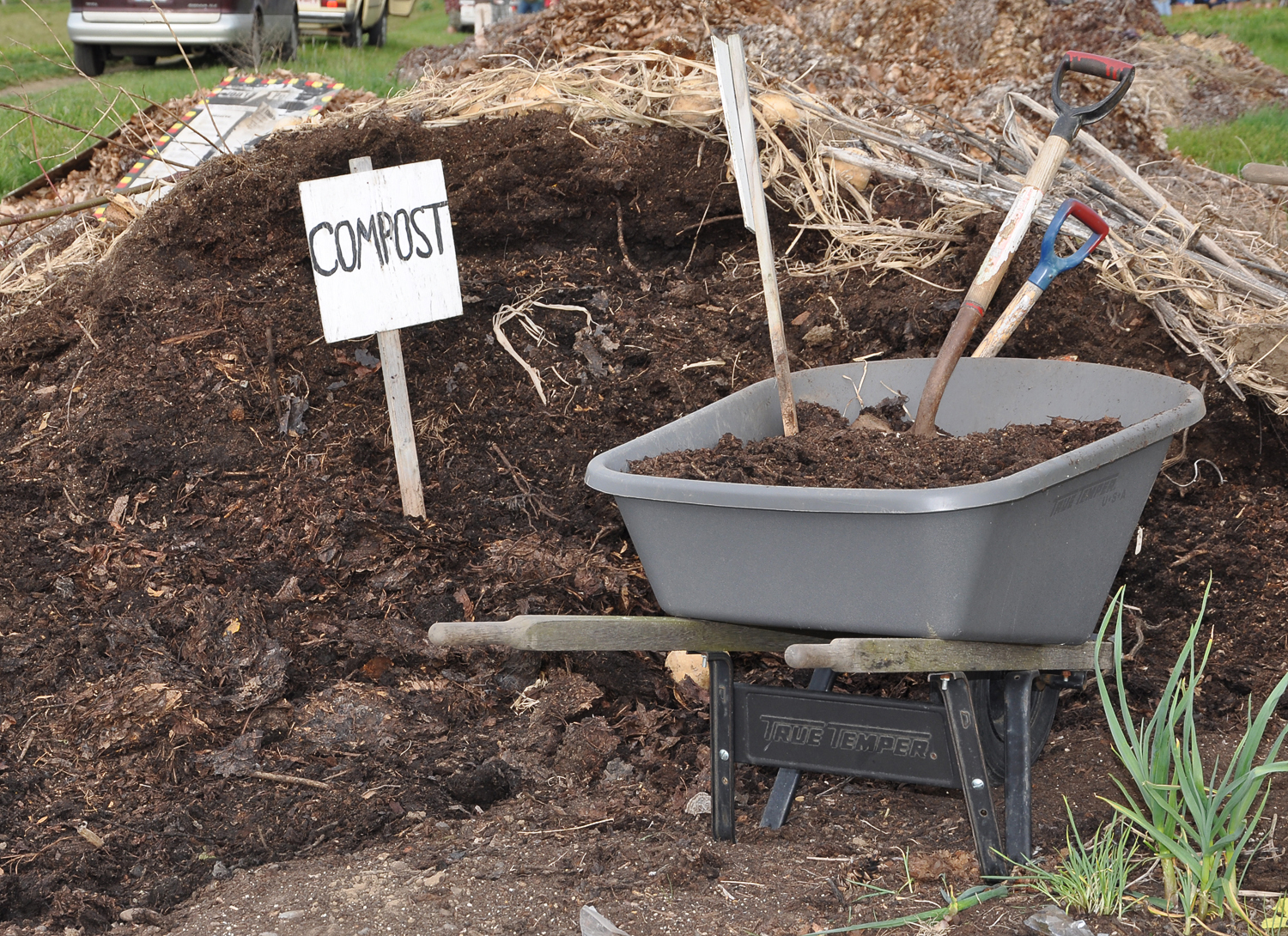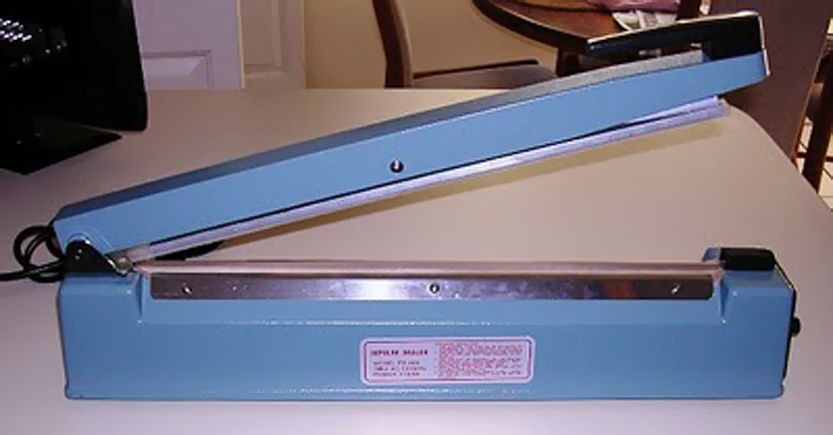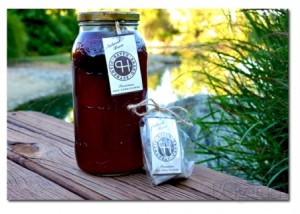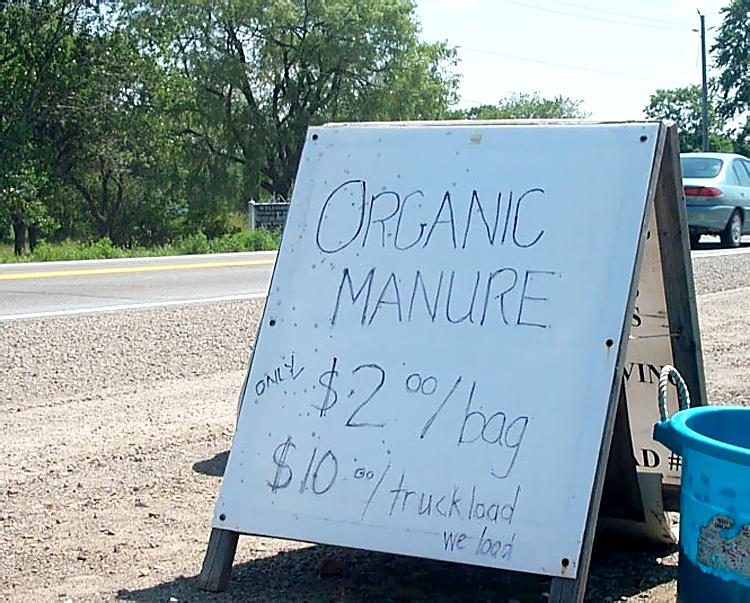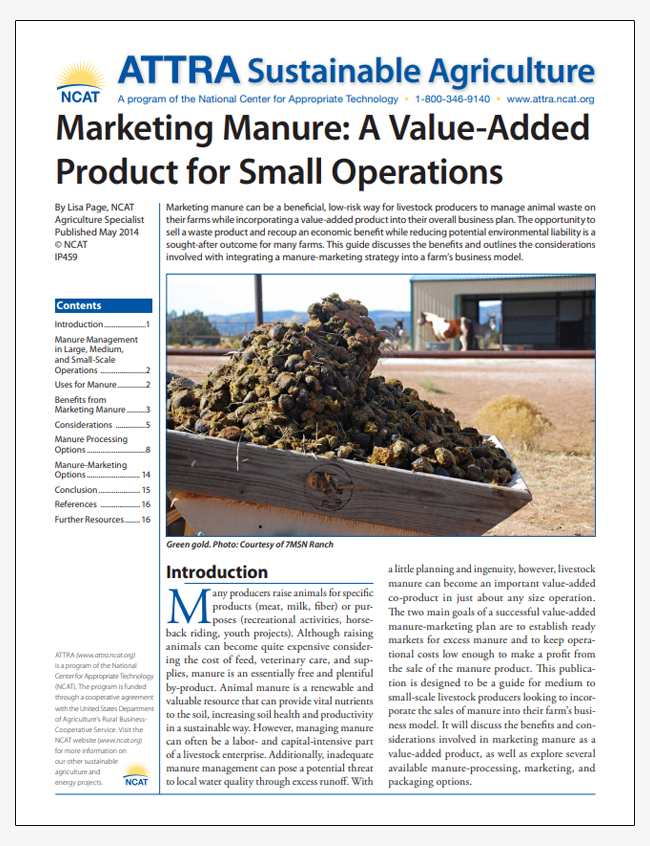Marketing Manure: A Value-Added Product for Small Operations
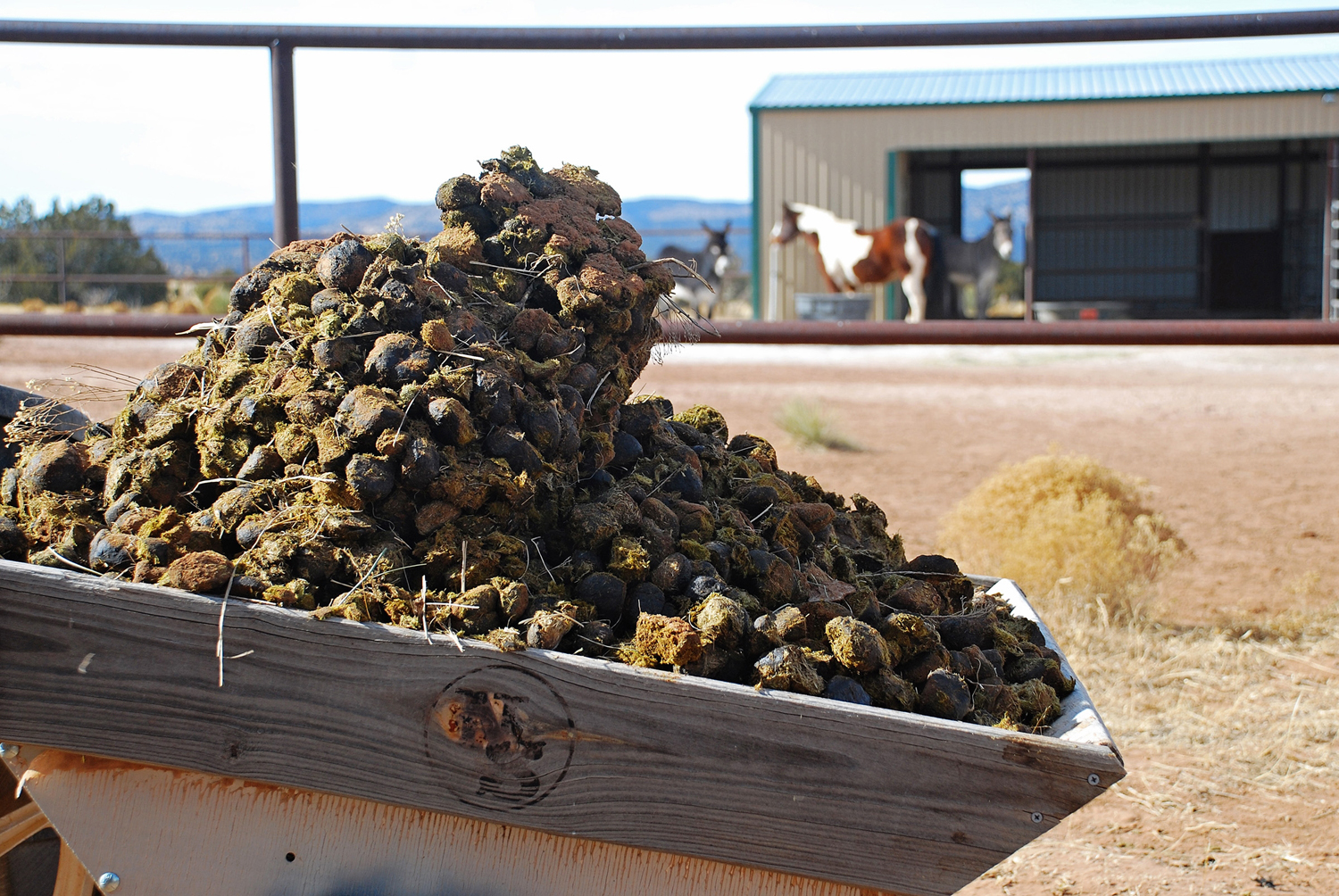
Green gold. Photo: Courtesy of 7MSN Ranch
By Lisa Page, NCAT Agriculture Specialist
Abstract
Marketing manure can be a beneficial, low-risk way for livestock producers to manage animal waste on their farms while incorporating a value-added product into their overall business plan. The opportunity to sell a waste product and recoup an economic benefit while reducing potential environmental liability is a sought-after outcome for many farms. This guide discusses the benefits and outlines the considerations involved with integrating a manure-marketing strategy into a farm’s business model.
Contents
Introduction
Manure Management in Large, Medium, and Small-Scale Operations
Uses for Manure
Benefits from Marketing Manure
Considerations
Manure Processing Options
Manure Marketing Options
Conclusion
References
Further Resources
Introduction
Many producers raise animals for specific products (meat, milk, fiber) or purposes (recreational activities, horseback riding, youth projects). Although raising animals can become quite expensive considering the cost of feed, veterinary care, and supplies, manure is an essentially free and plentiful by-product. Animal manure is a renewable and valuable resource that can provide vital nutrients to the soil, increasing soil health and productivity in a sustainable way. However, managing manure can often be a labor – and capital-intensive part of a livestock enterprise. Additionally, inadequate manure management can pose a potential threat to local water quality through excess runoff. With a little planning and ingenuity, however, livestock manure can become an important value-added co-product in just about any size operation. The two main goals of a successful value-added manure-marketing plan are to establish ready markets for excess manure and to keep operational costs low enough to make a profit from the sale of the manure product. This publication is designed to be a guide for medium to small-scale livestock producers looking to incorporate the sales of manure into their farm’s business model. It will discuss the benefits and considerations involved in marketing manure as a value-added product, as well as explore several available manure-processing, marketing, and packaging options.
Manure Management in Large, Medium, and Small-Scale Operations
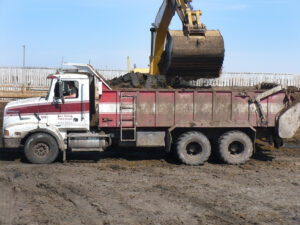
Tractors and trucks are often needed to remove manure in larger operations. Photo: Ken Smith Corral Cleaners
Large operations that care for hundreds or even thousands of animals, such as dairies, feedlots, poultry facilities, horse racetracks, and even zoos, typically produce a bulk supply of manure. Due to the sheer volume of manure produced on a daily basis, many of these operations find it feasible to contract with outside companies to oversee the removal and disposal of their manure, install on-site facilities to further process the manure into a sellable product, or use it directly on their farm.
| Table 1: Typical Amounts of Manure Produced by Farm Animals | ||
| Unit | Species | Tons/year |
| 1 | dairy cow | 21 |
| 1 | horse | 9 |
| 1 | sow and litter | 6 |
| 1 | sheep | 1 |
| 100 | chickens | 2 |
| Source: Penn State Extension, no date. | ||
Small to medium-scale producers, such as horse boarding facilities, backyard farms, dairies, and egg producers, face a similar challenge, yet on a smaller scale. Table 1 indicates that a dairy cow produces about 115 pounds of manure each day, and a horse an average of 49 pounds of manure per day. That is a lot of manure to deal with and more than twice the weight most cows produce in milk. While this is much less manure than large feedlots or dairies generate, it still adds up to a considerable amount that must be managed. However, many of these operations are working with limited budgets and facilities, which prevent them from contracting with outside waste-removal companies or installing on-site manure processing facilities.
Uses for Manure
Nutrient Content of Manure as a Soil Amendment
The plant nutrients in manure are the nutrients utilized to grow crops. The concentration of nutrients varies greatly among animal species. Typical manure nutrient concentrations are listed in Table 2.
| Table 2: Nutrient Content by Animal Species (in pounds per ton, averaged) | |||
| Species | N | P | K |
| Cattle | 10 | 4 | 8 |
| Poultry | 60 | 55 | 30 |
| Swine | 14 | 11 | 11 |
| Source: Penn State Extension, no date. | |||
Although the nutrient content per pound may seem small, consider that the typical manure application is between 20 and 40 tons per acre for cattle and swine manure, and between five and 10 tons per acre for poultry manure. This is equivalent to 200 to 600 pounds of nitrogen per acre!
Be aware that these are averaged amounts of nutrients and that variations within species and among farms are large. The variability in manure analyses between any two similar livestock farms can be significant. Variations for some common manure types are listed in Table 3.
| Table 3: Percentage Variation (+ or -) in Nutrient Content of Manure by Livestock Species | |||
| Species | N | P | K |
| Cattle | 68 | 93 | 43 |
| Poultry | 40 | 43 | 41 |
| Swine | 47 | 76 | 74 |
| Source: Penn State Extension, no date. | |||
It is important to use an actual manure analysis figure rather than depend on averaged or typical values from these tables. Farm-to-farm variability can be significant. However, little variation on the same farm is noticed from year to year if the management stays the same. Thus, an analysis made from a particular farm this year generally can be used as a guideline for next year.
Alternative Uses
Increasing awareness of sustainable practices has led to various advances in uses of manure. For example, the heat created from decomposing microbes in the composting process can be used to heat greenhouses and other small structures. Methane emitted from manure can be captured, stored, and used as a source of clean energy. For more information on biogas production, see the ATTRA publication Micro-Scale Biogas Production: A Beginners Guide. Composted manure is an economical source of fertilizer for soil and can lead to a general increase in agricultural productivity. It is also an important element in vermicomposting (worm casting production). Manure can also be used to make paper products, biodegradable planting pots, garden sculptures, and unique crafts. Manure can be used in a variety of applications, depending on the amount available and what best suits the needs of the producer.
Benefits from Marketing Manure
Generates Revenue from Consistent Inventory
With the right planning and business management, selling manure can be a great source of additional income to your operation that can grow and expand over time. As long as you have animals, you can expect to have a constant, fresh manure supply. Having an effective manure-management plan in place will be an important part of implementing a value-added business. Ensuring you have a regular supply of manure to work with means you will be able to provide a product to your customers consistently.
Helps Maintain a Clean, Healthy Living Environment on the Property
Regular removal of manure from animal pens is a crucial biosecurity practice in maintaining a clean, healthy living environment for livestock. Non-composted manure becomes a breeding ground for airborne pests and flies (Nelson, 2008) and manure allowed to build up in pens and pastures will give off a foul odor, increase the presence of parasites in animals, and give the property an unclean, uncared-for feeling. Good manure management also increases a farm’s curb appeal and will help foster a good relationship with neighbors who may not appreciate the smell of manure next door. In addition to removing manure from animal pens regularly, you will need to compost or remove the accumulated pile of manure from the property on a regular basis. Although removing the entire manure pile at one time would be an ideal outcome, that option is not always feasible. The bottom line is that the manure produced on an operation may not all be removable at once, but manure sales will ensure that at least some portion of it is getting moved off the property on a regular basis, while also generating income. Timely removal of manure stack piles is critical on farms, especially before the onset of winter weather, in order to provide clean animal confinement in barns and stalls. Finally, regular processing and sale of bagged and composted manure will assure that the product retains value, as long storage may lead to reduced quality of the product due to nutrient loss.
Provides a Useful Product to Customers
Producers who market manure, in any form, are meeting the needs of their clients by providing a product that is sustainable and that has many benefits. By diversifying, or providing a variety of products or processing options, a producer can expand to further meet their clients’ needs. This means that as a producer, you should regularly have a supply of your product available to you and once you have established your market and built a strong customer base, you should have a demand for your manure product. Regular communication with customers to address their changing needs and preferences is important. Knowing and understanding your targeted customers is the overarching rule of all exceptional companies (Hall, 2012).
Purchasers who are using manure to improve their soil characteristics and meet fertility needs will need to know the nutrient value of what they purchase. Nutrient content of manure varies by animal species (see Table 2). Manure that has been tested and labeled with its nutrient content has intrinsically more value to the buyer and also reduces the potential risk of over-applying nutrients to fields and gardens.
Customers may determine the volume of their manure purchases based on which macronutrient need they are trying to meet. However, application rates of cattle manure that aim to meet a crop’s nitrogen needs may result in over-application of phosphorus. Many states with impaired waterways have set phosphorus index levels for the amount that can be applied near bodies of water. Please refer to the eXtension website included in the “Further Resources” section of this publication for state-specific information.
Although there are textbook values for various types of animal and poultry manures based on livestock type, age, and production systems, actual manure test results may vary from these nutrient contents by as much as 50% (both lower and higher). Variation is largely due to the different ways farms collect and store manure, which can either capture and concentrate the nutrients or allow rain and snow to dilute and leach the nutrients, letting them run off.
Many states have manure regulations regarding disposal or sale of manure that is in excess of what the producing farm can utilize in their cropping plan. These requirements relate to documenting and timing the land application of manure. Check with your local USDA NRCS or the local Extension office for more information.
Allows Flexibility of Involvement
Marketing manure as a value-added product allows the producer to choose the amount of time and effort they are willing to commit to producing and marketing their product. Possible factors to consider are time, facilities, manpower, and what type of product best fits in with the operation’s overall business model. However, once a customer base is developed, it is critical to be a consistent supplier.
Offers Additional Income with Minimal Investment and Risk
Many business ventures require a person to make a large and often risky, initial investment with no guarantee that the business will be successful. Fortunately, with manure marketing, a producer can safely begin their business on a very small scale, with little capital investment, and begin to receive additional income for their product fairly quickly. As they begin to establish a customer base and see the demand for their product increasing, they can then choose to expand production and invest more time and capital into their venture to meet growing customer needs. Experts suggest starting a business “on a shoestring,” which will allow a producer to recover from potential mistakes early-on in the business and help prevent debt further down the road (Laurence, no date).
Considerations
Livestock producers should strive to maintain ethical and responsible practices in their operation by providing proper care, treatment, and nutrition to animals, as well as shelter, access to clean water, parasite-control methods, and clean, comfortable housing. Removal of fly-breeding and odor-producing waste products accompanies those goals and responsibilities.
Initial Investment and Considerations
With any business venture, there are bound to be initial start-up costs. In marketing manure, initial investments can range from purchasing a few rakes, shovels, and a wheelbarrow for self-load applications to purchasing specialized bagging and heat-sealing machines to provide customers with a custom-packaged finished product. One benefit of marketing manure is that a producer can start off with a relatively low-risk business venture involving limited commitment or start-up cost. If demand for product increases, they can consider purchasing more-specialized equipment or offering a wider variety of products to meet customers’ needs. Each enterprise is different, and a producer will need to consider limiting factors for initial investment.
Here are several questions a producer should address when creating a marketing plan.
- How much time do I have to personally be involved with or oversee the marketing of manure from my operation? Will I be the main person doing the work or will someone else oversee the process?
- Are there regulations that I need to meet in selling or exporting manure from my farm?
- Does the sale of manure necessitate having it analyzed and providing that information to the buyer?
- How much manure is required to maintain good soil health on my own land? How much extra manure will I have available to sell?
- How much initial capital am I willing to invest in tools, packaging, or processing supplies?
- What are my most limiting factors: time, resources, budget, and/or space?
- What is the local market in my area? Do people in my community have a need for my product?
- Will customers come to my farm to pick up and purchase the product? Is shipping or providing transport of my product an option?
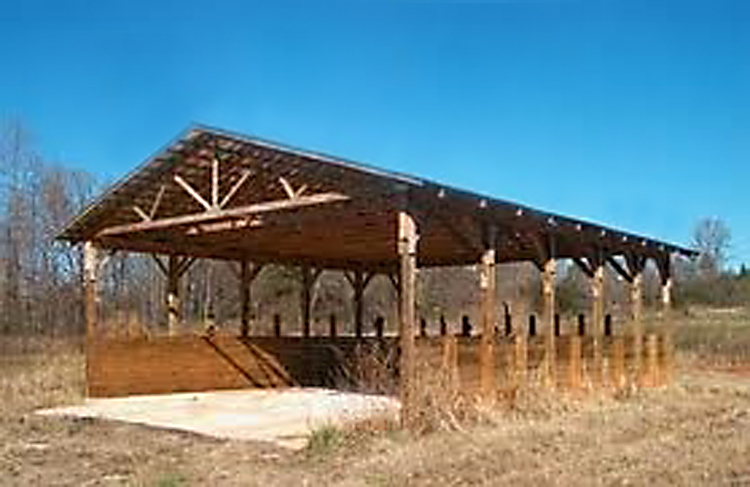
An example of a well-planned bulk manure storage areata. Photo: Courtesy of Iredell County Soil and Water Conservation District
After answering the above questions, a producer will have a realistic sense of where to begin. In order to minimize risk in a new business venture, a producer should start off with sufficient investment to succeed. A producer can then increase output or purchase specialized equipment to help process the manure, once an initial market is created or found. Consider what option best fits the scale of your operation, the level of involvement and amount of time you can afford to give, and what your goals are.
Manure Storage Area
Operations caring for large animals, such as horses or cattle, may find it necessary to store daily manure collections in a central area, or pile, on the property until the manure can be land-applied or sold. Producers raising smaller livestock, such as sheep, goats, llamas, alpacas, poultry, or rabbits may find they can process these smaller bulk amounts regularly, requiring less storage area on the property. Producers will need to consider their facilities and space available for manure storage. If bulk amounts of manure will be stored on the property, the producer should be sure the pile is located in an area that will be the least bothersome to neighbors and that is on a cement slab with proper drainage to reduce waste runoff in wet weather. If part of a manure-marketing plan includes the need to store manures until sale, federal requirements specify that the storage area be covered and that any rainwater runoff be collected and directed away from permanent or seasonal surface waterways. Ranchers and farmers may be eligible for state and federal cost-share monies from a variety of agencies and programs that would help pay for necessary physical improvements. Farmers should contact their local USDA NRCS, state departments of agriculture, and county water and soil conservation districts for more information.
Many municipalities have strict zoning laws governing the storage location and techniques for disposal of manure piles. Be sure to check on local laws prior to planning your manure-marketing strategy. In all states there are federal requirements for storage, sale, and land application of manures, established by EPA in the regulations for Concentrated Animal Feeding Operations (CAFO) under the Clean Water Act. In addition, states often have additional rules and regulations that apply to farms disposing of their manures off the farm. Farmers and ranchers need to check with their local Cooperative Extension, USDA-NRCS, or Soil Conservation District offices to see what specific requirements need to be met.
Rules Regarding Land Application of Manure
Buyers of manure who are applying it to crops being used for food consumption have several food safety rules and regulations to follow, such as Good Agricultural Practices (GAP) guidelines. Certified organic producers must follow the standards of the USDA National Organic Program (NOP). If farmers contract their sales to food buyers, there are often additional or differing requirements.
The pending Food Safety and Modernization Act (FSMA) regulations administered by the U.S. Food and Drug Administration will also have requirements regarding the timing and method for application of both treated (composted) and raw manures to land used for food crops.
| Table 4: FAP and NOP rules conflict on raw manure application. Source: Chapman et al., 2013 | ||
| USDA Good Agricultural Practices (GAP) | USDA National Organic Program (NOP) | |
| Raw Manure Application (Manure Incorporated into Soil) | The USDA GAP audit specifies that raw manure application should be a minimum of 120 days prior to harvest and that no raw manure should be applied on crops harvested within 120 days of application. | The National Organic Program allows application of manure 120 days before harvest for crops where the consumed portion comes into contact with the soil, or 90 days before harvest if the consumed portion does not come into contact with the soil. |
| Documentation | Both require similar documentation: field map, land history, manure application rates, dates and times, compost monitoring, cleaning records for equipment, transportation and traceability | |
| Note: If possible, a best management practice would be to apply manure when the field is not in production, and follow with a cover crop planting. This will maximize the time between application and harvest of crops. | ||
Persistent-Pesticide Concerns
Both producers supplying manure products and customers purchasing those products should be concerned with the potential for residual pesticides that may be present in manure or compost products.
For the most part, pesticides are rapidly degraded during the composting process and do not persist at concentrations that affect human health, garden plants, or crops. However, unlike most pesticides, clopyralid is very persistent in composts and manures and is largely unaffected by the composting process. These herbicides pass directly through the animal and are excreted in the manure. For example, horse manures tested at Washington State University, and used in a local garden, showed damaging levels of clopyralid. Cattle manure can also contain these residues if the animals graze or eat grass or hay where these compounds have been applied. Organic farmers are especially concerned about this issue since they often rely on composts and manure to supply soil fertility. In addition to the likelihood of crop injury as described above, if herbicide residues are found on these farms, organic certification is lost for at least three years. (Doohan and Michel, no date)
In an effort to minimize customer concerns regarding the potential presence of residual pesticides in a manure product, a producer should have their product tested by an independent laboratory or university prior to sale. Providing a tested, pesticide-free product may also be a strategy that will set the product apart from others on the market. Customers may be more inclined to purchase a product whose label indicates it has been tested and verified pesticide-free.
Profit vs. Involvement
Producers can typically expect to receive a higher return from a product that required more time or energy to produce, if the local market demand is sufficient to cover these costs and there is limited competition. For example, fully composted, bagged manure typically sells at a higher price than the same amount of raw, bulk manure. Manure that is higher in nitrogen typically commands a higher price. As an example, poultry manure from Cotner Farms, a family-owned egg-laying farm located in Danville, Pennsylvania, is sold annually at auction. Each lot of manure has been analyzed for nutrient content. Prices typically range from $15 per ton to $28 per ton. (Conrad, 2013)
Manure Processing Options
Raw Manure
Processing
Raw manure has not undergone any form of processing and is, essentially, straight from the animal. It may or may not include the bedding materials used to absorb the urine fraction. Those materials can be sawdust, straw, sand, or shredded newspapers. This is sometimes referred to as pack manure.
Usage
Raw manure can be used as a nitrogen source for home composting systems. Raw manure can volatize quickly, causing it to lose fertility value if not mixed with carbon elements or covered.
Due to its high water content, fresh smell, and overall unpleasantness, raw manure should be sold in bulk form only. Bulk raw manure pickup eliminates the need for any packaging materials. Using a tractor with a bucket will make loading larger quantities more efficient. Smaller amounts of bulk raw manure can be shoveled from the manure pile into a customer’s truck bed or trailer. Be sure to consider potential liability issues that may arise from customers bringing their vehicles onto your farm and using farm tools or equipment. It may be necessary to post hazard warning signs and/or obtain insurance to cover this situation. Smaller amounts of manure could also be transported from your farm to the customer’s nearby location by filling old feed bags and tying the tops with baling string. It is not recommended that raw manure be packaged for long-term storage.

Offering bulk manure allows a customer to take as little or as much as they need. Photo: Rachel Turiel
Marketing
Raw manure is best suited for on-farm pick up, either loaded by the customer or by the producer. A tractor may be helpful for loading larger quantities. Again, be aware of liability concerns associated with this marketing strategy. Simple, inexpensive signage advertising “manure for sale” works well as a marketing tool.
Benefits
In this situation, the customer can obtain large amounts of manure in raw form, which can then be composted in a way that will best suit their needs. This approach requires minimal time and energy involvement from the producer, succeeds at getting large amounts of manure removed from the property, and is an easy way to begin a manure-marketing business. For small-scale applications, such as a garden or small vegetable plots, there are no requirements. Many states however, have rules and guidelines for composting larger quantities of manures on-farm. Even farms that have no animals or birds on-site are regulated under the Clean Water Act.
Aged Manure
Processing

Aged manure is lighter and less odorous than fresh manure. Photo: Courtesy of Sagebrush Valley Ranch
Aging manure, also known as passive composting, relies on time, natural temperature, moisture fluctuations, and UV (ultraviolet) radiation from the sun to reduce pathogens (Chapman et al., no date). This aging process is done by exposing manure to the natural elements for an extended period of time, allowing it to dry out. This also allows some of the salts to leach out of manure that, if manure is applied fresh or raw, are likely to burn some plants. During the aging process, the chemical nutrients such as nitrogen, phosphorus, and potassium are used and incorporated into the bodies of the bacteria, fungi, and microbes that use those nutrients as a food source. These convert nutrients to a rich slow-release, organic form that returns them to the soil when the aged manure is land-applied. The manure retains most of its nutrient and nitrogen content, still making it a viable nitrogen source and beneficial soil amendment. The nutrients contained in composted manure are not as quickly available for plant uptake as are those in raw manure or synthetic fertilizers. Growers applying aged manure as part or all of their fertility program will see nutrients become available as the soil temperatures warm over 50° F and microbial activity rapidly makes those organic fractions available.
Usage
Allowing manure to dry naturally reduces the odor and lowers the moisture content. This makes the manure easier to handle and makes the final product more user-friendly and sanitary. Unlike composted manure, aged manure has not undergone a microbial breakdown and therefore is more likely to contain weed seeds and pathogens. While aging is less labor-intensive than composting, it does require that the manure remain on the property for an extended period of time. Ideally, the manure pile should be located on the outskirts of the property away from animal pens and neighboring residences, and should be on a cement slab to reduce runoff in wet weather.
Packaging
Bulk aged manure, like bulk raw manure, can be loaded directly into a truck bed or trailer, eliminating the need for any packaging materials. An advantage of aged manure over raw manure is that the product has had time to dry out and lose some of its strong scent, making it a better candidate for individual packaging and resale, perhaps in addition to bulk sales. Packaging can range from simple and economical plastic quart or gallon bags that are clearly labeled to branded products with custom, high-quality packaging that may include business logos and custom designs. Either way, make sure the package is securely sealed, especially if it is to be shipped through the mail. This type of packaging works especially well with small-pelleted manure from animals like rabbits, llamas, alpacas, sheep, and goats.
Take into consideration who you are marketing to, where you are marketing your product, and what kind of packaging fits the needs of your customers and your budget. Experts suggest packaging is a way of communicating your brand to consumers after they have left the store (Hutzler, 2011). Typically, if you plan to charge a premium for your product or plan to sell it in high-end locations, high-quality, attractive packaging is recommended.
Recommended Marketing
Aged manure can be picked up directly from your farm in bulk or marketed in smaller, individual packages.
Benefits
Aged manure allows the customer to obtain product in bulk amounts or smaller packages. A more stable product with shelf life and individual packaging provides producers with a wider variety of marketing options, including retail sales as well as shipping.
Composted Manure
For more information on the composting process, see the ATTRA publication Composting: The Basics.
Processing
Composting is a biological process in which microorganisms convert organic materials such as manure, leaves, sawdust, straw, and paper into a soil material called compost (Maryland Horse Outreach Workgroup, 2007). The high temperatures (140 – 160°F) generated through composting can kill many potentially harmful organisms and weed seeds (Barnyards and Backyards, 2007) that may be present in raw manure. When the management goal is to reduce pathogens, the compost shall attain a temperature greater than 130°F for at least five days as an average throughout the compost mass (NRCS, 2007). Producers considering composting manure should be aware that they will need sufficient space for compost piles for the duration of the composting process and should factor in specialized equipment that may be needed in some applications, such as a windrow turner.
Usage
The combination of heat and addition of other organic materials makes for a safer, more nutrient-rich final product. Once the composting process is complete, the product is ready to be applied directly to the soil.
Packaging
Like raw and aged manure, composted manure can be picked up in bulk, eliminating the need for any packaging materials, or it can be packaged into smaller, well-sealed bags for resale. Manure that has been composted typically has a non-offensive, earthy scent, making it a good candidate for packaging and resale. If composted manure is being directly marketed as a fertilizer product or as a “plant food,” there are state regulations requiring a fertility analysis of N:P:K on the bagged product being sold.
Producers offering manure products in larger sizes and quantities should consider using securely sealed 25- or 40-pound bags to package their products. Farms that can afford a bagging and heat sealing machine can provide an easily transportable, securely sealed product to their customers. Heat sealing machines range in price from around fifty dollars for a manual table-top design that is suitable for smaller bags up to several hundred dollars for larger, heavier duty machines capable of accommodating larger bags. Industrial custom bagging machines that weigh and fill a bag with product, similar to those that fill sandbags, can cost well over $1,000 when new.
Recommended Marketing
Composted manure can be picked up directly from your farm in bulk or marketed in smaller, individual bags. Compost commonly comes in 25- or 40-pound sealed bags.
Benefits
Although more labor intensive than allowing manure to dry naturally, composting offers many benefits to both the producer and customer (Maryland Horse Outreach Workgroup, 2007):
- Composting reduces the volume of stable waste by 40% to 60%.
- Composting reduces many of the pathogens that exist in raw manures, such as Salmonella and coliform bacteria.
- Composting is environmentally friendly. It converts nutrients into a more stable and time-released form for plant uptake.
- Compost adds organic material to the soil, improving soil fertility and moisture retention and increasing the yield potential of pasture and hay grasses.
- Compost is a value-added product and has many different uses. It can be spread over pastures and hay fields to improve grass production and used in the garden or in landscaping.
- It is a generally accepted business idea that a product which requires more time and effort in processing can, typically, be sold for a higher price than an unprocessed product.
Compost Teas
Processing
Compost tea is a liquid extract of compost that contains plant growth compounds and beneficial microorganisms. Compost tea is produced by steeping finished compost in water in order to extract beneficial microorganisms and compounds into solution. It is made in a variety of ways, including with or without aeration, and with or without adding supplemental nutrient sources (Oregon State University, no date).
Usage
Compost tea is typically foliar- or soil-applied as a nutrient source or applied to soil as a microbial inoculent to help build soil microbial populations (OSU, no date). Compost teas made from spent mushroom compost composted at high temperature (160 -180°F) have been shown to reduce the incidence of tomato late blight (Scheuerell and Mahaffee, 2002). Compost tea use on edible plants is a risk and does not meet the 120-day waiting requirements for contact with edible crop parts. In addition, the pending FSMA regulations also require water testing of the water used to make the tea (FDA, 2013).
Packaging
A producer has the option of selling compost tea in a ready-to-apply liquid form or a ready-to-brew tea bag. Because the product is dry, the tea bag option weighs less and has less potential for spillage, making it a better option for shipping and storage.
Recommended Marketing
Compost tea can be marketed in a variety of settings, including a farm store, retail location, or through the Internet, and can easily be shipped, provided the liquid form is securely sealed.
Benefits
Producers who choose to sell compost teas in addition to other products, such as bulk or bagged manure, are offering product diversity that can help them reach a wider customer base.
Alternative Manure Products
While many people associate “manure” with “compost,” several entrepreneurs have found or, in many cases, created niche markets for their manure-based products. Here is a sample of new and innovative products derived from manure:
- Stationery paper — Cellulose is extracted from manure, cleaned, and formed into pulp from which paper is made.
- Biodegradable plant starter pots — These pots break down once they have been placed in the soil, providing nutrients to young plants.
- Garden sculptures — Horse manure is packed into molds, producing whimsical garden art that will eventually break down and provide nutrients to the soil.
- Eco-friendly bricks — Bricks are being used as building materials and as efficient heat sources for wood stoves.
- Biodegradable waterless toilet systems — Manure is molded into a sleek toilet that, when full, can be fully composted.
- Jewelry — Hand-painted and bejeweled necklaces and earrings made of authentic moose droppings.
The possibilities are limitless and many successful businesses started with a simple idea. Although this type of product is typically more time and labor intensive than previously discussed options, it allows a person to express creativity while still finding a practical use for an otherwise unused material.
Case Study: Annie Haven, Proprietress of Authentic Haven Brand Manure Tea
Annie Haven comes from a family steeped (no pun intended) in rich agriculture history. The family owned Haven Seed Company, which grew produce and sold seed worldwide to seed houses like Burpee, Comstock Ferre, and D. Landreth from 1853 to 1968. Haven Seed Company originated in Ohio and later moved to the temperate Inland Empire area of southern California in 1910. The mild climate was perfect for citrus and dairy production.
Annie’s family began harvesting the manure from their company livestock, horses used to pull farm equipment and cattle raised to feed the workers, as a low-cost way to replenish nutrients back into the soil. They would process, package, and brew the manure solely for their own use.
Small local farmers who did not raise livestock, however, soon turned to Annie’s father, Paul, for his manure tea product as a way to replenish nutrients to their fields. He began brewing his signature manure tea in large vats, often 1,000 to 30,000 gallons, for large-acreage applications to meet the needs of local farmers.
As the cities began to spread out from Los Angeles, water became less available for irrigation, housing developments soon began replacing farmland, and as a result, Haven Seed Company closed in 1968. The Havens recognized the need to offer their manure tea in a smaller size better suited for home garden applications than entire fields of crops.
Annie’s father continued to farm and ranch on a smaller scale, and as the urban sprawl continued to move outward from Los Angeles, environmentally conscious home gardeners turned to him for a soil conditioner, which he called manure tea. Annie continued to sell Haven Brand Manure Tea locally, relying on its reputation as a quality soil conditioner as her main marketing platform.
Now, 40 years later, she focuses on the use of social media, including Twitter, Facebook , and the product’s website, to market her manure tea line. However, the change wasn’t by choice.
Annie’s older brother, a graphic designer, created and managed the website for her business and gave the brand its logo, while Annie perfected her manure tea recipe to meet the needs of local gardeners. Upon the tragic loss of her brother, Annie found herself forced to figure out how to market her product and manage a website, something she was very unfamiliar with.
Despite the overwhelming sense to give up, Annie’s character and determination overcame her fears.
“Every time I have a struggle, I just keep plugging away.”
In desperation, she took to social media, primarily Twitter, and began promoting her product enough to get a few orders coming in until her business began to blossom.
“I remember my first Tweet and who replied,” she laughs.
Since then she has relied entirely on social media as the main marketing platform for her manure tea line and product sales, both wholesale and retail, are done entirely through her website. In addition, Annie authors a blog on her website where she shares gardening tips and pictures and answers questions from her customers. She also speaks with garden clubs and community organizations, and she has been a guest speaker on several podcast interviews.
Annie oversees every aspect of her manure tea product from beginning to end, a responsibility her customers have come to appreciate and expect. Her products are processed and packaged by hand at the ranch with no use of machinery, which is often a culprit in cross contamination. Annie says that one of the best marketing strategies producers have is simply knowing their product.
“Know your product, know the benefits it offers, and know your customer,” she suggests.
“Come to my ranch. See my land. See my pastures. See my animals. See how I do it,” she says. “If you stop knowing your land, you stop knowing your product.”
Annie is proud of the sustainable practices she includes on her ranch, which she credits back to her family’s early sustainable philosophy.
“My grandfather did not buy into the big push for using chemicals that began around World War II. Around the same time, my father attended vet school in the 1930s, when treating animals with antibiotics began to be more widely practiced. My dad preferred to raise his livestock using more preventative, sustainable management practices instead of relying on drugs for treatment.”
Haven Brand Manure Tea is harvested only from Haven Ranch raised livestock, which are free of antibiotics, growth hormones, and genetically engineered/GMO feed. Livestock are grazed rotationally – a sustainable practice that helps prevent the build-up of parasites – on native grass pastures that are pesticide and herbicide free.
“Many people are unaware that hay treated with pesticides and herbicides pass right through the animal and can be present in their manure,” she says. “Producers need to have a good understanding of the by-product their livestock are producing, and by that I mean the feed they are consuming and how they harvest, process, and package the manure.”
Haven Brand Manure Tea markets three products: Cow Manure Tea, Horse Manure Tea, and an Alfalfa Tea specially formulated to promote rose growth. Annie finds these three products provide the backyard farmers and growers, who make up most of her customers, with all they need to nourish the soil naturally.
Paying attention to her customer’s environmentally conscious nature makes her product packaging extremely important. Each 100% biodegradable cotton tea bag contains just the right amount of Annie’s tried and true dried manure tea recipe. While these tea bags resemble those often found steeping on the back porch on a warm summer’s day, you wouldn’t want to drink this tea! When spent, the tea bags can be composted or buried. As a nod to her family’s history, Annie’s business logo is her livestock brand, previously her father’s, which includes a reverse PH for Paul Haven.
Despite several challenges along the way, Annie has managed to build a successful manure-tea business by combining experience with a bit of gumption.
“I love all aspects of what I do from my livestock breeding program to interacting and sharing with my customers. Continuing my family legacy is extremely important to me.”
Manure Marketing Options
So you have the animals, the manure supply, and the packaging squared away, now what? You need to decide how you will market your product and where you will sell it. There are several potential outlets for marketing manure products. You may find one of the following options, or perhaps a combination of strategies, works well for you. Although both face-to-face and virtual strategies offer strong benefits, savvy marketers are building integrated communications plans that marry the benefits of both approaches (Murphy, 2011). Experiment and see what works best for your individual situation and needs.
Internet
Accurate record-keeping is crucial in any business enterprise. These records will help provide valuable data that can assist you in making future decisions, analyzing customer needs, and ultimately running a successful business. For further information on accounting, refer to the ATTRA publication Basic Accounting: Guidance for Beginning Farmers.
Many small operations use the Internet and social media to advertise and sell their manure products, mainly because the Internet allows their product to be viewed by a large group of customers. A producer can easily and inexpensively set up a website for their product. Having a dedicated business website allows customers to quickly access, view, and purchase your product or contact you with questions. While this option makes ordering and transactions convenient for your customer, you must be sure to keep accurate records of all business transactions, that orders are shipped in a timely fashion, and that any customer needs are resolved. In addition to a website, social media is also an excellent way to network with potential customers. You can find more information on utilizing social media in the ATTRA publication Social Media Tools for Farm Product Marketing.
Farmers Markets
Selling your product at a farmers market allows you to establish a personal connection with your customer base by being able to explain how the product is produced, what its benefits are, and what your business philosophy is, as well as answer any questions the customer may have. Although this option is more time-consuming than Internet sales, many producers feel it is worth it. In the fast-paced age of technology, many people still prefer to speak with the person who directly makes the product. At its core, face-to-face engagement creates a personal connection and builds trust between a company and its target audience. Giving a warm handshake, carrying an engaging conversation, and getting to know customers and prospects on an individual level can help form stronger, more meaningful, and more profitable business relationships (Murphy, 2011). Remember that most farmers markets operate on a seasonal basis, typically running from early summer to fall, which prevents year-round sales utilizing this market.
On-Farm Pick Up
On-farm sales are a popular part of the growing agritourism business model. This approach encourages interaction with your customers and allows them to see where the product came from and how it was made. This is a great opportunity to share information with your customers and educate them on the importance of your product as well as promote your business. This option can be as simple as allowing customers to load bulk manure onto trucks or trailers or as fancy as creating a roadside stand or farm store to showcase your products. This option can be used alone or in addition to other agritourism events your farm may offer. Producers should be sure to consider potential liability issues that may arise from customers bringing their vehicles onto the site and using farm tools or equipment.
Local Businesses/Retail
Networking with local businesses, such as feed, animal care, and garden stores, is a helpful way to advertise your product, especially within your community. This option allows your product to be seen by and sold to the public without requiring you, the producer, to invest much time in doing so. Many small businesses like to support one another. The store owner may charge a small fee for this service or they may be willing to donate a bit of shelf space in exchange for some free samples. Producers should clearly inform sales staff of their product’s features and benefits so they can, in turn, communicate these facts to a customer. “Knowledge is power and for retailers, product knowledge can mean more sales. It is difficult to effectively sell to a consumer if we cannot show how a particular product will address a shopper’s needs. Having a thorough understanding of the products on the shelves can allow a retailer to use different techniques and methods of presenting the product to customers” (Waters, no date).
Conclusion
No matter what type of animal or livestock you raise, you will always have manure. If you have more than you can utilize in your own operation and allow it to go unmanaged, it will become a burden. However, if you create a market for your renewable resource and embrace it, it can be a revenue-generating product for your operation. How involved you get depends on your budget, enthusiasm, and creativity. Although most producers would agree that regular, bulk removal of manure is ideal, sometimes that option is not feasible. Even if you decide to start off small with manure sales, some excess manure leaving your property is better than no manure leaving your property. There is always room to expand and grow your manure market in the future. The bottom line is that, with a little creativity and ingenuity, the sky is the limit.
References
Beegle, Doug and Bosworth, Janet. No date. Nutrient Management: Agronomy Facts 16: Manure Management. Penn State Extension.
Chapman, Benjamin, Audrey Kreskey and Roland McReynolds. 2013. Good Agricultural Practices for Small Diversified Farms: Tips and Strategies to Reduce Risk and Pass an Audit. North Carolina State University and the Carolina Farm Stewardship Association
Conrad, Norm. Regional Director, National Center for Appropriate Technology. 2014. Personal communication with author.
Doohan, Douglas and Frederick C. Michel, Jr. No date. Clopyralid and Other Pesticides in Compost. Ohio State University Extension Fact Sheet.
FDA (U.S. Food and Drug Administration). 2013. FSMA Proposed Rule for Produce Safety.
Hall, Alan. 2012. To Succeed as an Entrepreneur, Know Your Customer.
Hutzler, Kayla. 2011. Packaging Continues Branded Experience After Consumers Leave Store. Luxury Daily.com.
Laurence, Beth. Ten Tips for New Small Businesses.
Maryland Horse Outreach Workgroup. 2007. Horse Manure Management. Maryland.gov
Mealor, Rachel. 2007. The Scoop on Manure Management. Barnyards and Backyards. Summer.
Murphy, Rob. 2011. The Value of Face to Face Marketing in the Virtual Age.
Nelson, Josh. 2008. A New Reason to Compost Horse Manure.
Natural Resources Conservation Service (NRCS). 2007. Conservation Practice Standard: Composting Facility. August.
Oregon State University Extension Service – Douglas County Master Gardeners. No date. Compost Tea.
Penn State Extension. No date. Nutrient Management.
Pennsylvania Department of Environmental Protection. No date. Compost Tea as Easy as 1-2-3.
Scheuerell, Steve and Walter Mahaffee. 2002. Compost Teas: Principles and Prospects for Plant Disease Control. Compost Science and Utilization. Vol.10, No. 4. p. 313-338.
University of New Hampshire Cooperative Extension/New Hampshire Department of Agriculture. 1995. Good Neighbor Guide for Horse Keeping: Manure Management.
USDA Natural Resources Conservation Service. 1992. Agricultural Waste Management Handbook.
Waters, Shari. No date. Benefits of Product Knowledge: Knowing Your Product Can Mean More Sales. About.com
Further Resources
Online Resources
Compost Tea Task Force
2004. By the National Organic Standards Board.
In 2003, the National Organic Standards Board convened a Compost Tea Task Force to review the relevant scientific data and report their recommendations on what constitutes a reasonable use of compost tea. A major focus of the Task Force was concern about the potential for compost tea to contaminate edible plants with human pathogens as regulated in Section 205.203 of the USDA National Organic Program Final Rule. Addressing potential contamination by human pathogens required an examination of compost tea production and use practices, along with the underlying science relative to human pathogen contamination of crop plants.
Guidelines for Using Animal Manures and Manure-Based Composts in the Garden
July 2013. By Becky Sideman, Carl Majewski, Nada Haddad, and Tom Buob. University of New Hampshire Cooperative Extension.
Livestock Yards and Manure Storage Areas on Small Acreages: Protecting Our Drinking Water, Families and Animals
March 2010. By the University of Rhode Island Cooperative Extension. Small Acreage Livestock and Horse Series, Fact sheet 2.
This fact sheet provides land owners with suggestions to address proper manure storage, handling and preventing water contamination from runoff.
Manure Management for Small and Hobby Farms
June 2008. By Athena Bradley. North East Recycling Council.
This booklet discusses farm stewardship, pasture management, manure containment and management options, and manure use in gardens.
Manure Storage for Horse Facilities: Equine Facilities Manure Management Practices Series Fact Sheet
2003. By Contra Costa Clean Water.
This fact sheet outlines proper manure storage, location and site considerations, planning and design, plantings around manure storage and monitoring and maintenance.
National Engineering HandbookPart 637: Environmental Engineering. Chapter 2: Composting
USDA NRCS. 2010.
Small Scale Solutions for Your Farm
USDA Natural Resources Conservation Service.
NRCS provides assistance to design, lay out, and install conservation practices that fit both the resource needs and the producer’s objectives for the land. This website discusses simple management activities and complex structural practices including manure storage, odor control, managing manure nutrients, composting and runoff management.
To Succeed as an Entrepreneur, Know Your Customer
June 2012. By Alan Hall. Forbes magazine.
This article explains how knowing the needs of your customer can benefit a new business.
Whatcom County Manure Compost Marketing Guide: From Waste to Abundance
No date. By Allen Cramer.
Washington State Cooperative Extension.
This guide provides information to assist composters who seek to market their product.
Individual Contacts
Here are some producers and marketers of manure-based products who are willing to share information:
Authentic Haven Brand Manure Tea
Annie Haven
949-248-1249
info@manuretea.com
Mitchell Plain Farm
George Lager, Ph.D.
P.O. Box 232
Corydon, IN 47112
E-mail: mustangs@mitchellplainfarm.com
Information on composting.
Marketing Manure: A Value-Added Product for Small Operations
By Lisa Page, NCAT Agriculture Specialist
Published May 2014 ©NCAT
IP459
Slot 471
This publication is produced by the National Center for Appropriate Technology through the ATTRA Sustainable Agriculture program, under a cooperative agreement with USDA Rural Development. ATTRA.NCAT.ORG.

